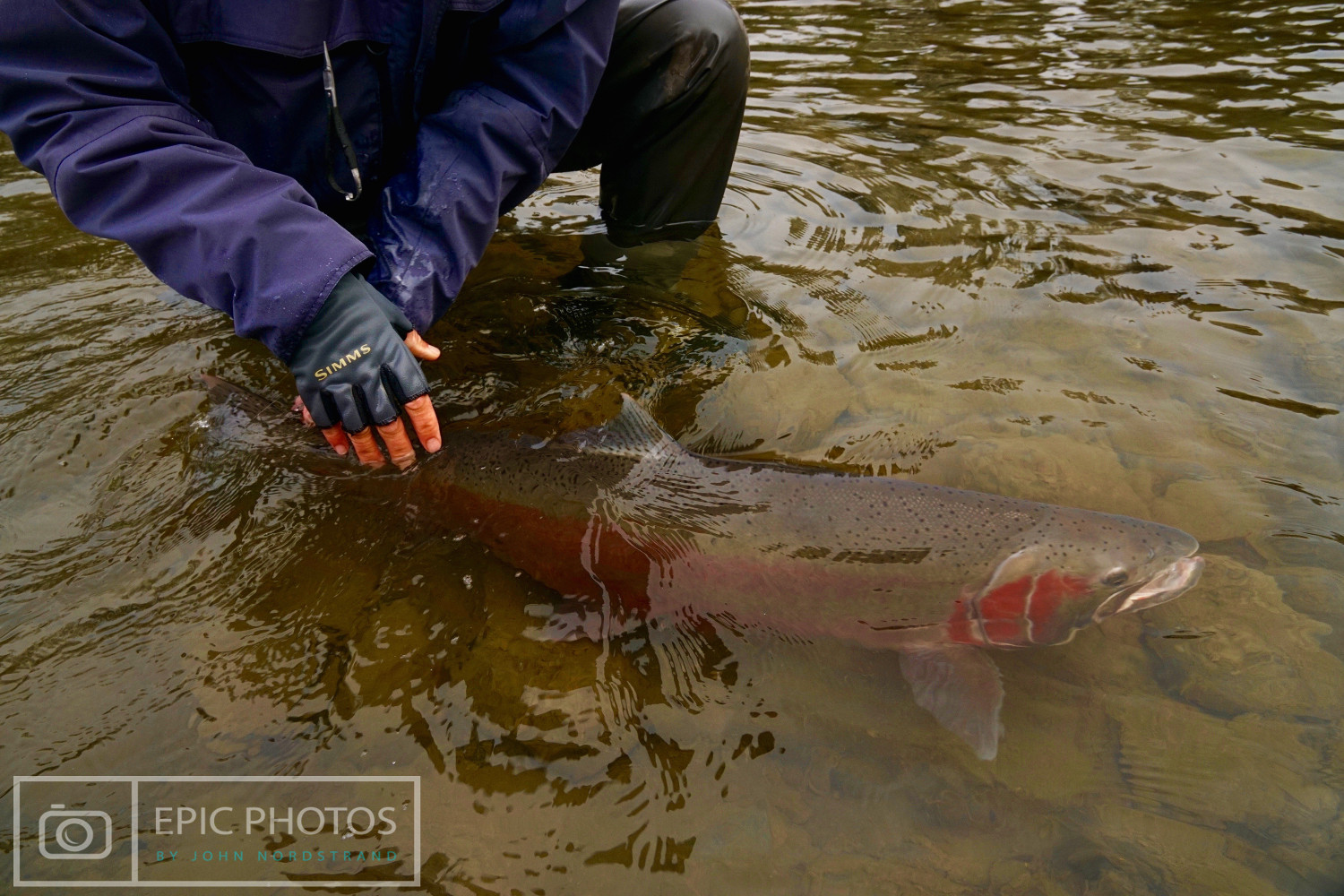Steelhead Win Landmark Victory
Water Flow Must Increase Below Cachuma Lake

By any reckoning, the steelhead trout won a significant legal victory this week, along with CalTrout and the Environmental Defense Center, which have been arguing the case for two decades. But it remains uncertain exactly how much more water will have to be released downstream from Lake Cachuma to create a habitat wet enough along the main stem of the Santa Ynez River for the federally endangered fish to wage a meaningful comeback.
The State Water Resources Control Board voted decisively on September 17 that current release schedules, which have been in place for 16 years, have made little difference. The state water board ruled that more water needed to be released and timed more strategically. In addition, the water board ruled the Bureau of Reclamation, the federal agency that built the dam, needed to conduct studies within two years examining the feasibility of getting the remnant steelhead population upstream past the barrier posed by Lake Cachuma. Once upstream, the water board concluded, the fish would find 48 miles of river in which to roost and spawn.
The Bureau has opposed such studies, arguing that Congress understood the dam’s impact on fish populations when it authorized construction in 1948 and that no provisions were made for fish ladders or trapping and trucking — two ways of getting the steelhead upstream. The state water board, the Bureau contends, lacks legal authority to tell a federal agency what to do.
The water agencies that rely on Lake Cachuma are less than thrilled; some have suggested the ruling could reduce water deliveries to customers by as much as 40 percent. Environmental documents indicate the loss between 1,600 and 3,600 acre feet a year.
Attorneys with the Environmental Defense Center noted that water releases will mimic the feast or famine fluctuations of nature and that conservation initiatives could free up to 7,000 acre feet as well. Losses in deliveries can be mitigated by conservation and the deployment of desalinated water from the City of Santa Barbara’s desalination plant. The City of Santa Barbara argued unsuccessfully that it owns and operates the desalination plant and can’t be expected to make that water available to offset water losses incurred by other water agencies.
Among other things, the water board’s ruling mandates the Bureau of Reclamation conduct studies on mitigating the impact of invasive, nonnative fish that eat steelhead fry — like the bass planted in Lake Cachuma every year by County Parks officials. Before Lake Cachuma was built, the Santa Ynez River was home to as many as 30,000 steelhead a year. Today, the number hovers around 200.



